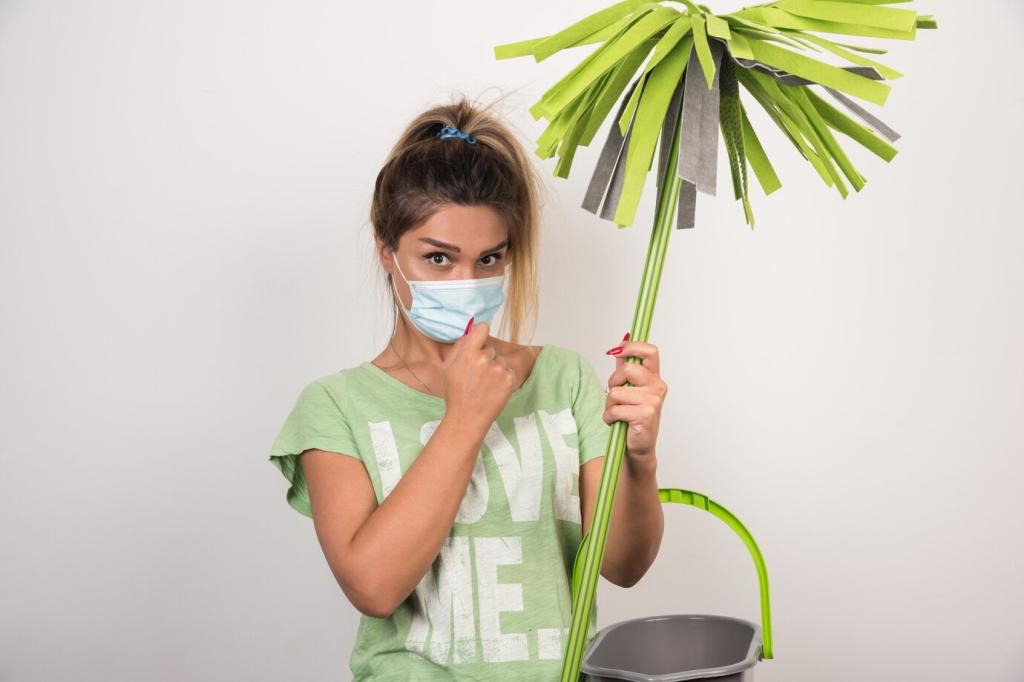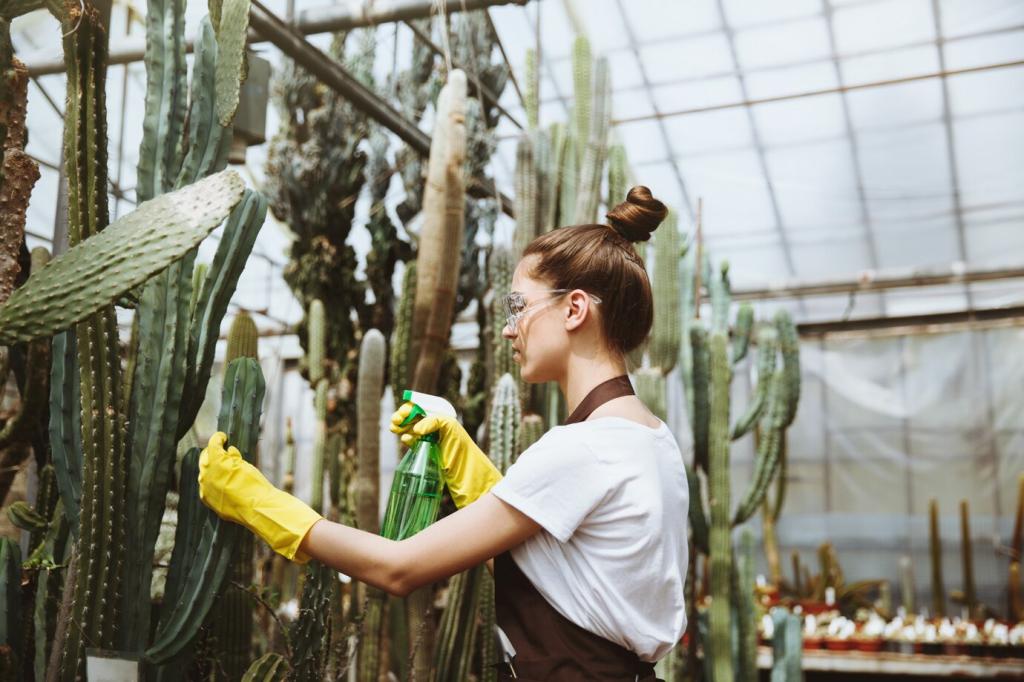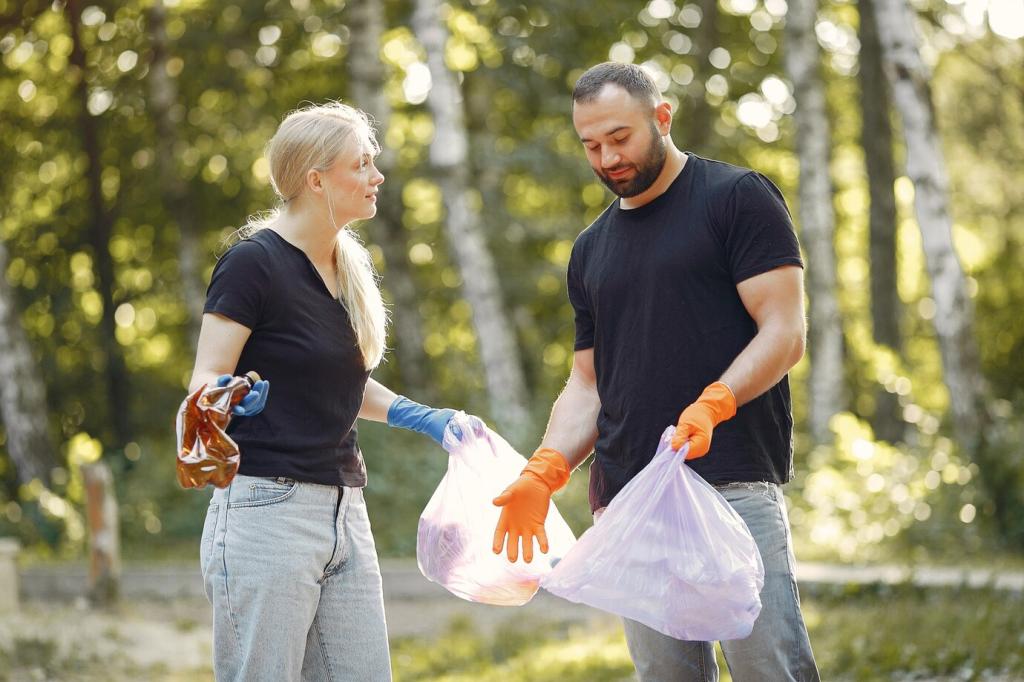Eco-Safe Solutions for Pet-Friendly Furniture Cleaning
Pet-Safe Chemistry 101
Look for plant-based surfactants, enzyme-only odor removers, fragrance-free or hypoallergenic labels, and certifications like EPA Safer Choice or Green Seal. Enzymes break down organic residues while gentle surfactants lift soil, keeping fabrics fresh without harsh fumes that may irritate animals.

Reading Upholstery Tags and Spot Testing
Decoding W, S, WS, and X
“W” welcomes water-based cleaners; “S” prefers solvent-based; “WS” accepts either with care; and “X” allows vacuuming only. Knowing your code reduces risk, guides product choice, and ensures your eco-safe approach aligns with the fabric’s construction, weave, and dye stability in a pet-active household.
The Gold-Standard Test
Blot a hidden area with your chosen cleaner on a white cloth, wait for drying, and inspect for dye transfer or texture change. Gentle pressure only, no scrubbing. This tiny trial helps confirm safety before tackling paw prints on the main seat cushions or the cat’s favorite nap spot.
A Quick Anecdote That Saved a Sofa
One reader nearly used a water cleaner on an “S” sofa after a puppy accident. A tag check and spot test redirected them to a mild solvent, preventing water rings and dye bleed. Share your own near-miss story—we’ll compile lessons to help other pet parents avoid the same pitfalls.
Enzymes for Organic Odors
Enzyme cleaners digest organic residues that cause persistent smells from urine or drool. Apply generously, allow dwell time per label, and keep areas ventilated. The goal is neutralization at the molecular level, not perfumed cover-ups that could irritate pets or trigger re-marking behavior.
Powders and Sorbents, Used Smartly
Baking soda or activated charcoal can absorb odors on fabric, but use lightly and vacuum thoroughly afterward. Prevent pets from ingesting loose powder and test on a hidden spot. Pair sorbents with routine enzyme treatments for deeper odor control that respects sensitive noses and delicate fibers.
Ventilation, Humidity, and Sunlight
Open windows, run a fan, and reduce humidity to discourage musty smells. When safe for fabrics, brief sunlight exposure can help freshen cushions. Encourage airflow behind furniture, and consider a dehumidifier to maintain balanced moisture levels that keep odors from settling into upholstery.
Fur, Dander, and Allergen Reduction
Use a vacuum with a sealed HEPA system and upholstery tools to capture fine dander, not just the visible fur. Slow, overlapping passes work best. Rubber grooming gloves can lift embedded hair from armrests and edges where tumbleweeds gather between cushions.
Fur, Dander, and Allergen Reduction
Lightly mist a microfiber cloth with distilled water to reduce static, then wipe in one consistent direction to collect hair. Rinse frequently, wring well, and repeat. This simple routine limits chemical use while preventing re-deposition of dust where pets love to lounge.





Sustainable Tools and Routines
Use refillable spray bottles and concentrated, pet-safe formulas to cut plastic waste. Note dilution ratios clearly on the bottle and keep products out of paw reach. A tidy, labeled caddy reduces mistakes on busy days when a spill or surprise accident needs fast attention.
Sustainable Tools and Routines
For routine soil, try distilled water with a small amount of a gentle, unscented plant-based surfactant. Use enzyme cleaners for organic odors. Avoid mixing vinegar with soap, which can cause residue, and always verify fabric compatibility before spraying generously across cushions.
Sustainable Tools and Routines
Time deeper cleans when pets are out for a walk or napping in another room. Rotate cushions, sun them briefly when safe, and schedule quick weekly maintenance. Share your routine in the comments so fellow readers can adapt your rhythm to their own busy pet households.
Training and Environment: The Cleanliness Multiplier
01
Regular dog walks, prompt litter box scooping, and stress reduction go a long way. Offer clear bathroom opportunities and reward desired behavior generously. Prevention lightens the cleaning load and protects upholstery padding, where odors are hardest to neutralize once they soak in deeply.
02
Provide sturdy scratching posts, cozy pet blankets on approved furniture zones, and engaging toys to focus energy. Double-sided furniture tape can discourage unwanted scratching while you build better habits. Share your favorite scratch-post materials so others can find what their cats actually use.
03
Tell us about your proudest pet-safe cleaning win, from resurrecting a stained armchair to finally defeating mystery odors. Post questions, request product tests, and subscribe for new guides. Your stories help shape practical, compassionate advice that respects both your furniture and your furry family.
